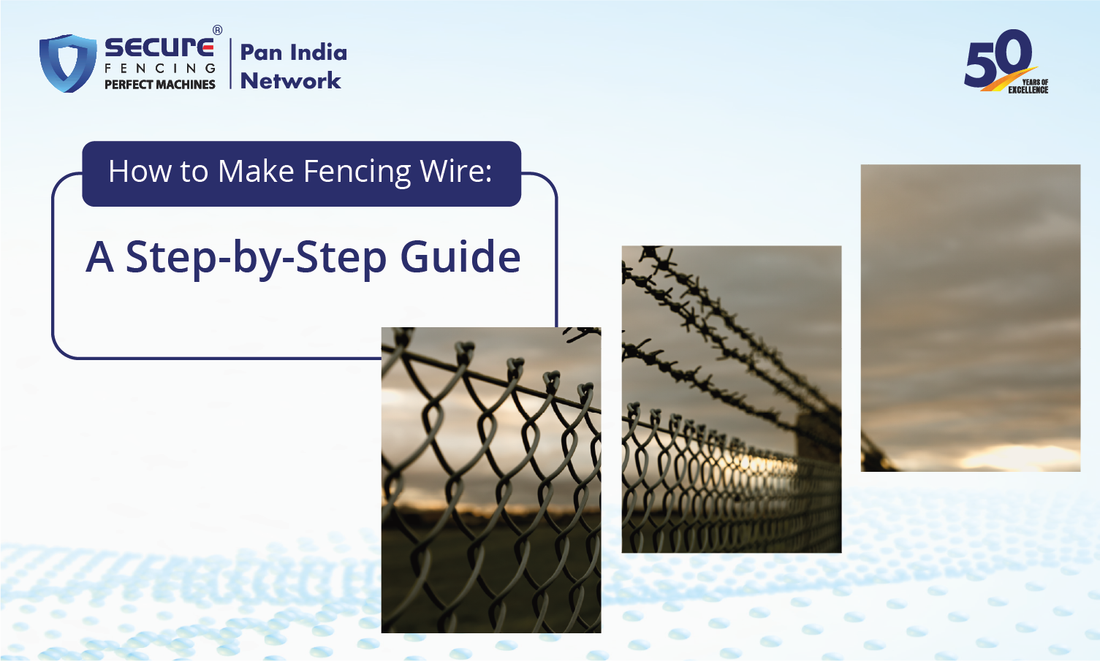
How to Make Fencing Wire: A Step-by-Step Guide
Fencing wire is a fundamental component in creating secure boundaries for properties, farms, gardens, and industrial sites. Understanding the manufacturing process of fencing wire can be insightful, especially for those considering small-scale production or DIY projects.
Step 1: Material Selection
The journey begins with selecting the appropriate wire material. Common choices include:
- Galvanized Steel: Offers corrosion resistance and durability.
- Stainless Steel: Provides high strength and longevity.
- PVC-Coated Wire: Adds an extra layer of protection against environmental factors.
The choice of material depends on the intended use and environmental conditions.
Step 2: Wire Drawing
The selected wire material is drawn through a series of dies to reduce its diameter to the desired thickness. This process, known as wire drawing, ensures uniformity and prepares the wire for the next stages of production.
Step 3: Annealing
To enhance the wire's flexibility and reduce brittleness, it undergoes an annealing process. This involves heating the wire to a specific temperature and then cooling it slowly, which alters its microstructure and improves its ductility.
Step 4: Coating (Optional)
For added protection against rust and corrosion, the wire may be coated. Common coating methods include:
- Galvanization: Applying a zinc coating to the wire.
-
PVC Coating: Enveloping the wire in a layer of PVC material.
Coating not only extends the wire's lifespan but also provides aesthetic appeal.
Step 5: Forming the Mesh
The wire is then woven or welded to create the desired mesh pattern. There are two primary methods:
- Woven Wire Mesh: The wire strands are interlaced to form a flexible mesh.
-
Welded Wire Mesh: The intersections of the wire strands are welded together, resulting in a rigid structure.
The choice between woven and welded mesh depends on the specific requirements of the fencing application.
Step 6: Cutting and Packaging
Once the mesh is formed, it is cut into standard sizes suitable for various applications. The finished products are then packaged and prepared for distribution.
FAQs
Q1: What is the difference between woven and welded wire mesh?
- Woven Wire Mesh: Offers flexibility and is suitable for applications like garden fencing.
-
Welded Wire Mesh: Provides rigidity and strength, making it ideal for security fences and industrial use.
Q2: Can I make fencing wire at home?
While it's possible to create small amounts of fencing wire at home using basic tools, industrial-scale production requires specialized machinery and expertise.
Q3: How do I choose the right wire gauge for my fencing project?
The appropriate wire gauge depends on the intended use. For example, a 14-gauge wire is commonly used for general fencing, while a 12-gauge wire offers increased strength for security purposes.
Q4: How can I prevent my fencing wire from rusting?
To prevent rust, consider using galvanized or PVC-coated wire. Regular maintenance, such as cleaning and inspecting for damage, can also extend the wire's lifespan.
Q5: Where can I purchase fencing wire?
Fencing wire can be purchased from hardware stores, specialized fencing suppliers, or directly from manufacturers. It's essential to ensure the quality and specifications meet your project's requirements.
Understanding the process of making fencing wire equips you with the knowledge to make informed decisions for your fencing needs. Whether you're embarking on a DIY project or considering small-scale production, this guide serves as a valuable resource.
